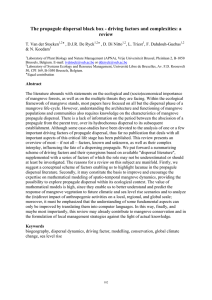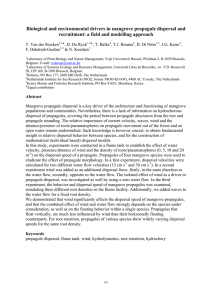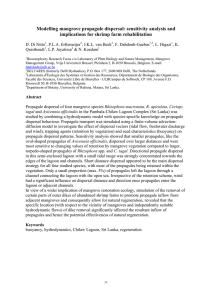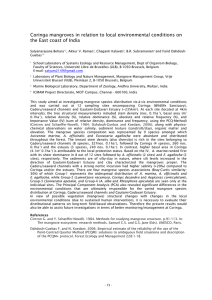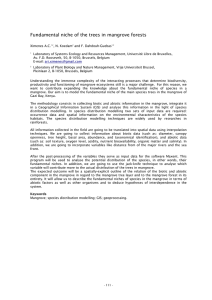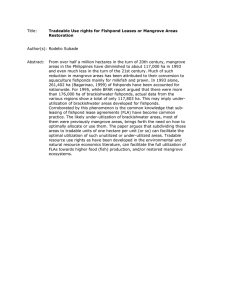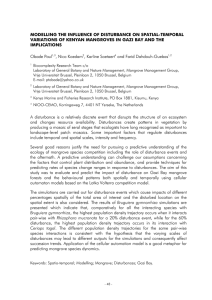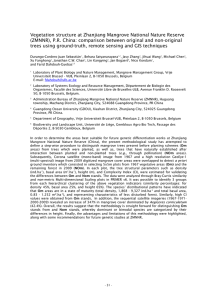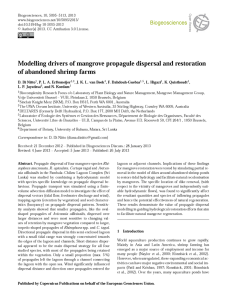Floating with seeds: understanding hydrochorous mangrove
advertisement
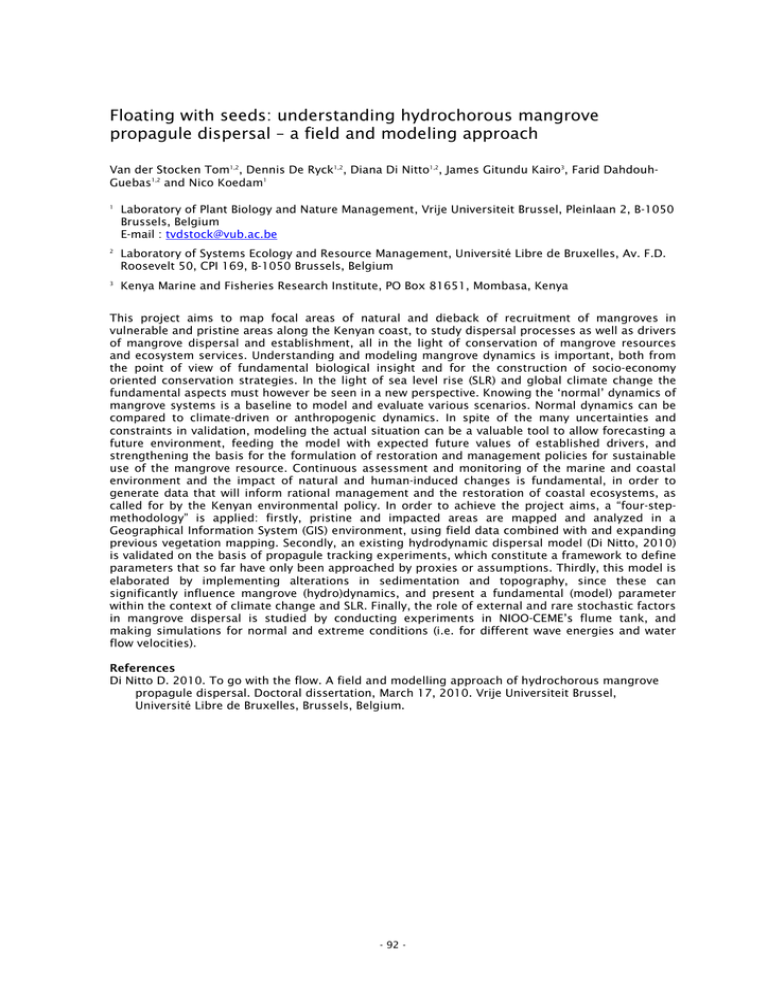
Floating with seeds: understanding hydrochorous mangrove propagule dispersal – a field and modeling approach Van der Stocken Tom1,2, Dennis De Ryck1,2, Diana Di Nitto1,2, James Gitundu Kairo3, Farid DahdouhGuebas1,2 and Nico Koedam1 1 Laboratory of Plant Biology and Nature Management, Vrije Universiteit Brussel, Pleinlaan 2, B-1050 Brussels, Belgium E-mail : tvdstock@vub.ac.be 2 Laboratory of Systems Ecology and Resource Management, Université Libre de Bruxelles, Av. F.D. Roosevelt 50, CPI 169, B-1050 Brussels, Belgium 3 Kenya Marine and Fisheries Research Institute, PO Box 81651, Mombasa, Kenya This project aims to map focal areas of natural and dieback of recruitment of mangroves in vulnerable and pristine areas along the Kenyan coast, to study dispersal processes as well as drivers of mangrove dispersal and establishment, all in the light of conservation of mangrove resources and ecosystem services. Understanding and modeling mangrove dynamics is important, both from the point of view of fundamental biological insight and for the construction of socio-economy oriented conservation strategies. In the light of sea level rise (SLR) and global climate change the fundamental aspects must however be seen in a new perspective. Knowing the ‘normal’ dynamics of mangrove systems is a baseline to model and evaluate various scenarios. Normal dynamics can be compared to climate-driven or anthropogenic dynamics. In spite of the many uncertainties and constraints in validation, modeling the actual situation can be a valuable tool to allow forecasting a future environment, feeding the model with expected future values of established drivers, and strengthening the basis for the formulation of restoration and management policies for sustainable use of the mangrove resource. Continuous assessment and monitoring of the marine and coastal environment and the impact of natural and human-induced changes is fundamental, in order to generate data that will inform rational management and the restoration of coastal ecosystems, as called for by the Kenyan environmental policy. In order to achieve the project aims, a “four-stepmethodology” is applied: firstly, pristine and impacted areas are mapped and analyzed in a Geographical Information System (GIS) environment, using field data combined with and expanding previous vegetation mapping. Secondly, an existing hydrodynamic dispersal model (Di Nitto, 2010) is validated on the basis of propagule tracking experiments, which constitute a framework to define parameters that so far have only been approached by proxies or assumptions. Thirdly, this model is elaborated by implementing alterations in sedimentation and topography, since these can significantly influence mangrove (hydro)dynamics, and present a fundamental (model) parameter within the context of climate change and SLR. Finally, the role of external and rare stochastic factors in mangrove dispersal is studied by conducting experiments in NIOO-CEME’s flume tank, and making simulations for normal and extreme conditions (i.e. for different wave energies and water flow velocities). References Di Nitto D. 2010. To go with the flow. A field and modelling approach of hydrochorous mangrove propagule dispersal. Doctoral dissertation, March 17, 2010. Vrije Universiteit Brussel, Université Libre de Bruxelles, Brussels, Belgium. - 92 -
